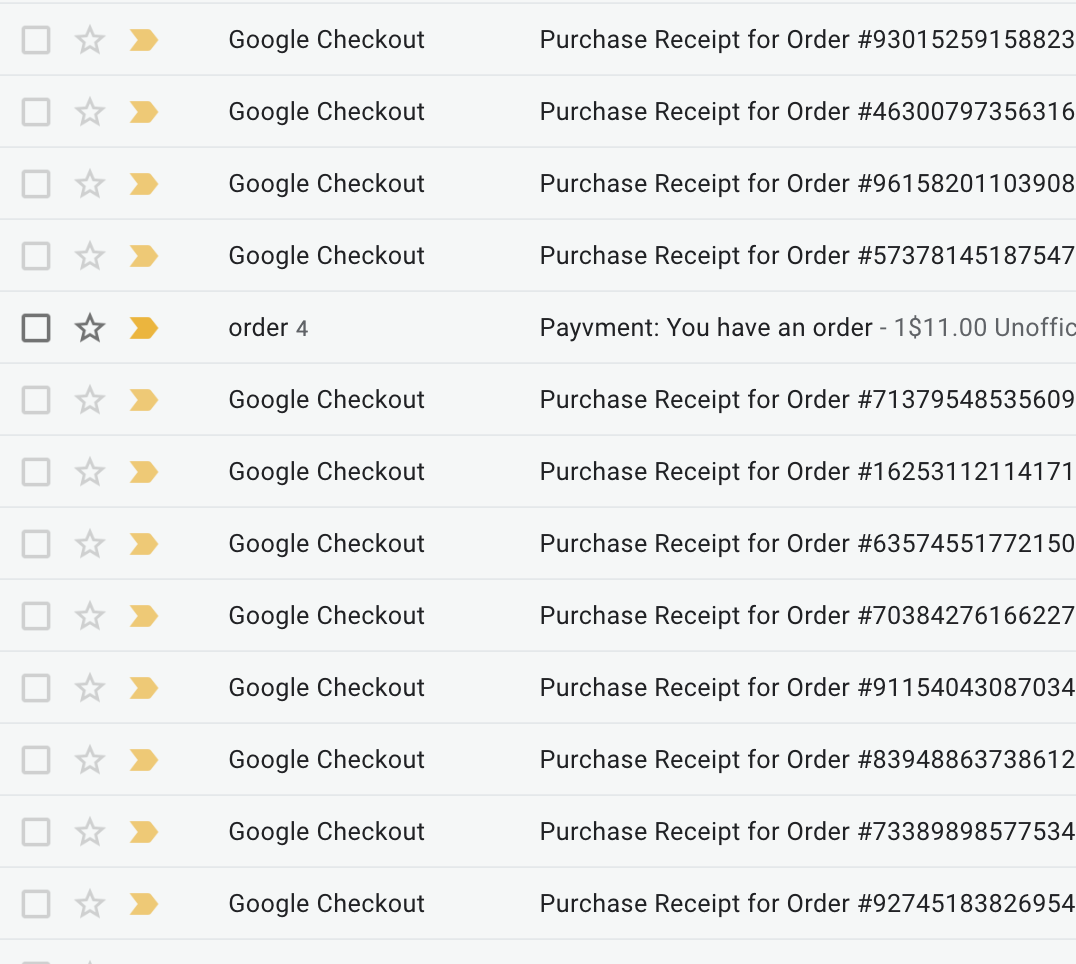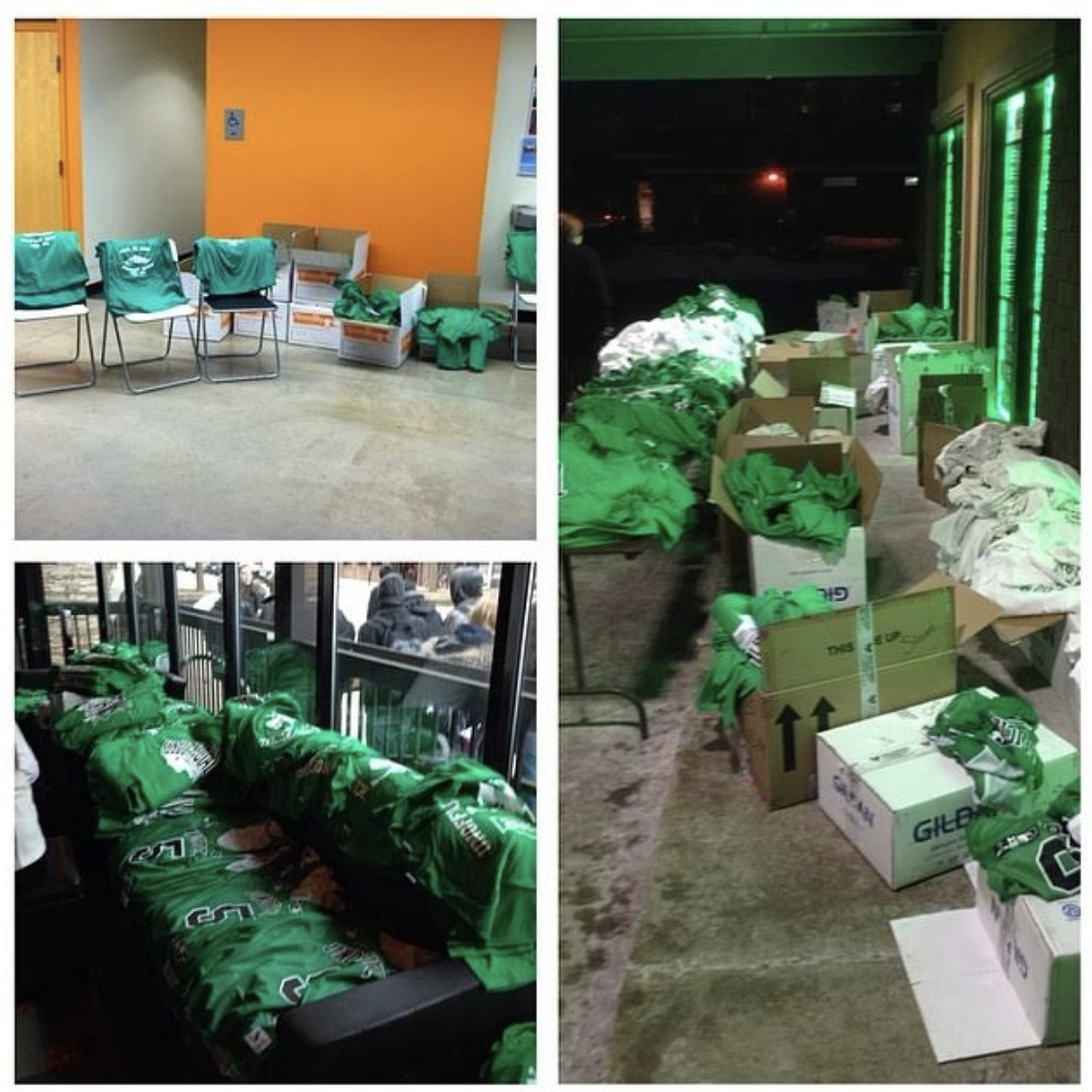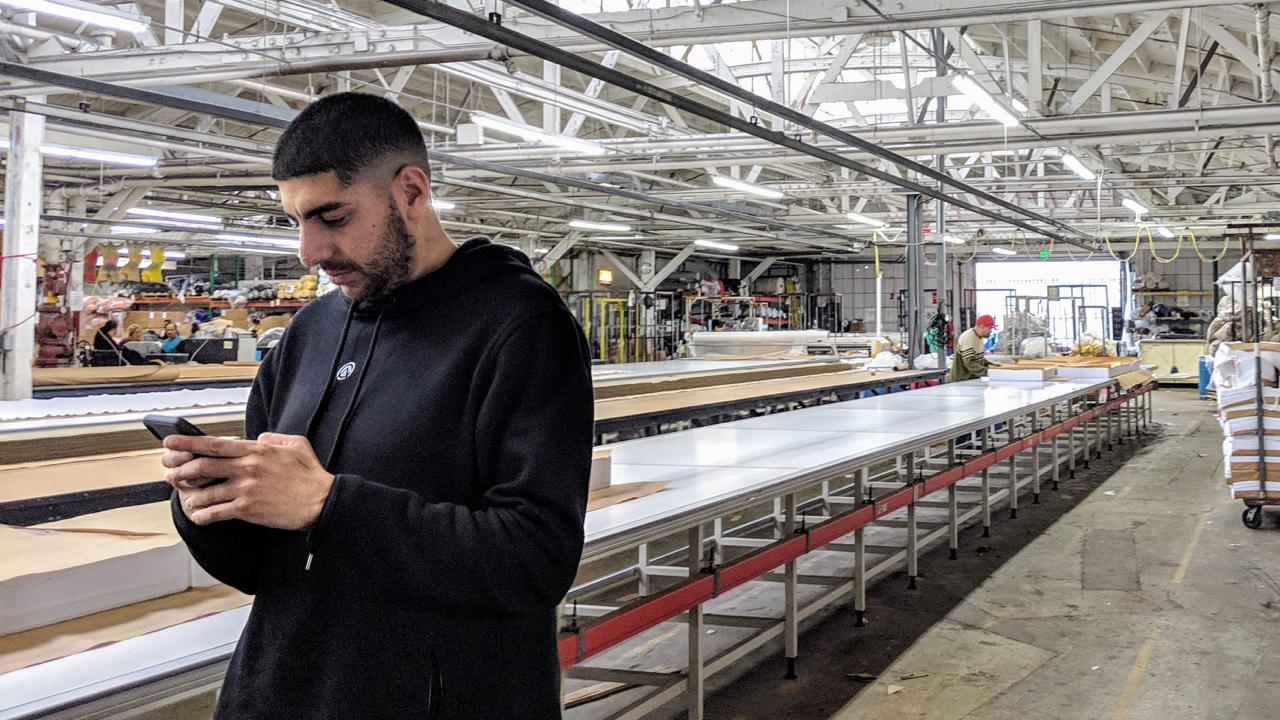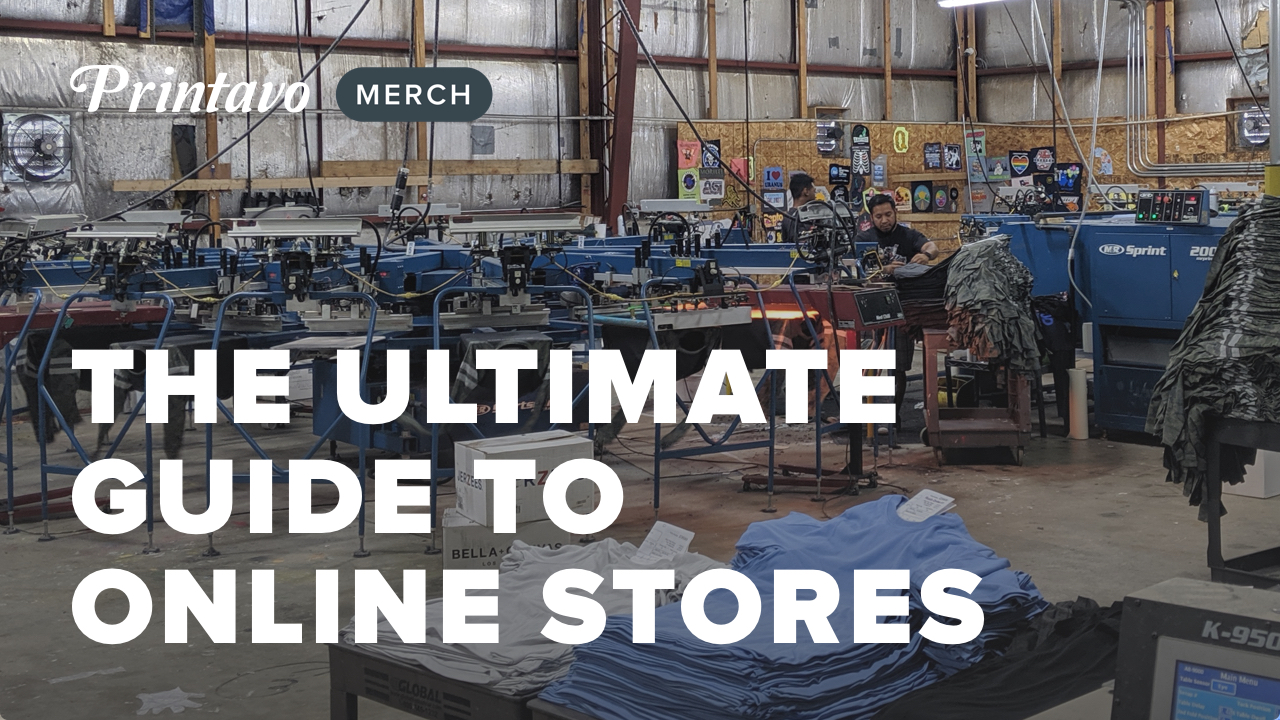It all started with a viral online store I made on a beach in Playa Del Carmen, Mexico.
I was 19. It was winter break. School was starting in a few short weeks, and I was very short on cash.
I loved Photoshop. I’d even designed merchandise for my fraternity. Being a Millennial with an allergy to hourly wages, I knew I had to find a hustle.
The lightbulb moment: St. Patrick’s Day is coming up. There’s 40,000 students on campus at U of I! If I sell like…a hundred shirts at $7 a pop…that would do it!
Don’t laugh at my “big dreams” of making $700. That seemed like a lot of money at the time. You were 19 once, too!
Now I co-own Campus Ink in Champaign, IL – a screen printing business that drives growth through a creative strategy. We use online stores and a nationwide network of sales representatives at colleges and universities.
Hit the ground running to get ahead
“Build a solution to get your idea rolling, then work out the details later. If you wait for a perfect solution, you’ll never start.” That’s the exact mentality that got me started.
My first online store was just a Google Site. It was the only way I could figure out how to accept Paypal payments. Nothing fancy or complicated.
Keep in mind, no one had any idea how e-commerce worked at this point.
Shopify was just an idea in someone’s head. Amazon was a respectable company, but not part of everyone’s day-to-day life. Ebay was probably the easiest way to sell your own products online.
But I knew if I could capture this market – the enthusiasm for St. Patrick’s Day on campus borders on madness – I’d have customers. I’d make sales. I’d get my $700. I’d have an awesome semester.
My first online store blew away every expectation I had.
We made more than 1,000 sales on our first online store. And because of that online store, I own a print shop.
Talk about hitting the ground running. It got out of hand!
How I did it: Use social media
The first key to the success of this store was social media.
I didn’t pay for ads, and at this point Facebook Ads basically didn’t exist. But what I did was create a Facebook page called “The Unofficial St. Patrick’s Day Store.”
This was my web site. This was home base. This was the center of all of the action.
From there, I created an event called “Unofficial St. Patrick’s Day 2012.” I made myself the unofficial digital host of a yearly tradition that an entire university takes part in. No one owned the event. I just took the liberty to host it myself.
The principle at work here is be the mayor of your town. I saw the university as a town that needed a mayor – a leader to put on the St. Patrick’s Day party.
I didn’t wait for anyone else to make the event. I didn’t find someone else’s event. I threw myself right into the center of the action, grabbed the attention, and gathered the crowd.
How you can do this now: use Facebook Groups, email, Snapchat, Instagram Stories, TikTok – anything you can think of, try it.
How I did it: Become the host
Invite: I began inviting everyone to my event. I sent the event to my 20 closest friends on campus and asked them to share it. Within a week I had 5,000 RSVPs just by leaning on my small network’s connections.
Promote: My goal was to drive people to my Google Site to buy merchandise, so my Facebook Page linked to the Google Site.
The Facebook Event I created was just a vehicle to get people to my Facebook Page, and then to my Google site.
Shipping: I didn’t want to deal with the cost and hassle of shipping, and my audience was concentrated in one place. So I picked a local bar near campus as a partner and offered pick-up there. It let me personally deliver happiness right to the customer!
Within a few days, my inbox was flooded with order notifications.

Why? Because I had met a very basic need: I’d given people that wanted to come together over St. Patrick’s Day a way to do it – and a way to wear that community!
How you can do this now: think about what groups, activities, events, bands, or even political groups people in your community come together over – and be a leader!
How I did it: Fuel sales even further
After I realized my proof-of-concept worked, I knew it was time to market the store heavily.
I worked with a print shop to negotiate fulfillment. It was apparent that I’d be able to turn a very healthy profit – so it was obvious I needed double-down and focus my efforts.
I realized I needed to do more work than I could by myself. So here’s what I did – I created ambassadors. This is a model that we’ve re-purposed at Campus Ink. It works!
- Get friends involved. I reached out to my friends and offered them “jobs.” All they had to do was find Facebook Groups relevant to our campus and post about the sale we were having.
- Discount codes. I gave every friend a discount code. Then, I promised them a small commission from each use of their discount code.
- Post a lot. Repetition is good. We really lit up Facebook. Don’t be afraid to be repetitive!
It seems simple – and it is. Using the combination of broadening reach and offering a discount, we nearly doubled sales in less than a week.
How you can do this now: offer a specific dollar discount (i.e. $5 instead of 10%) code, and incentivize your friends to help you make sales. Everyone likes a little easy money for some light work!
How I did it: Create urgency
We took the JC Penney approach to coupon codes: put them everywhere.
I took a volume-based sales approach to staying profitable. I used retail pricing for our merchandise and t-shirts, but I was buying the products in bulk at wholesale prices! This meant we could offer steep discounts. Some things that worked included:
- Flash sales. Offer a big discount for a day, or even a few hours.
- End-of-stock sales. Claim a product is going out of stock and offer a discount.
- Day-specific sales. We offered big discounts the busiest online shopping days (typically Wednesdays).
- Buy-one-get-one. Raise your single unit prices to cover both pieces.
- Buy by X, get Y. Give away inexpensive merchandise if someone purchases within a day.
Even more succeessful than coupon codes or discounts are rotating designs. I didn’t just change the designs for merchandise we offered – I would change the Facebook header image, the store’s colors, even the pictures of merchandise.
We would also release new artwork every few days. Customers seem to get FOMO when they see that new designs and products keep rolling out – and they compensate by purchasing more than they typically would. This also meant lots of customers checked back and re-purchased shortly before St. Patrick’s Day!
A note: we learned that too much messaging, advertising, and discussion about your store can get spammy and actually turns people against you. Start small and build up the volume to see how much people will tolerate.
How you can do it now: narrow down the timing of your sale, offer a very limited stock, get your community’s eyes on your merchandise.
How I did it: Freebies
Promotional products are extremely cheap.
I purchased 250 pairs of sunglasses. We gave them away with every order. A $2 pair of sunglasses is a better value than a $5 coupon code – and actually works to retain a customer better.
Customers love tangible, validating items. “This store really values me. They even sent me sunglasses. That is so cool!”
The sales were good for me. I wanted to do something nice for my customers. It was genuinely enjoyable!
The best part: since every order was picked up in-person, I got to meet tons of great people. The gratitude I felt from them kept me going and made the small price of $500 for some sunglasses seem irrelevant!
How you can do it now: samples, inexpensive merchandise, and even just thoughtful small gifts go a long way. What would you want to get for free?
Lesson learned: Bagging and tagging? Think it through
If you have a store that suddenly sells thousands of pieces, you will quickly realize you have to actually get those products to your customers.
We had a mess of computer files, spreadsheets, print-outs, and piles upon piles of shirts. But no clue how to make sense of this mess:

The first year that I ran this store, we had a line stretching for a hundred yards with people waiting to collect their orders. By the third year, I realized bagging-and-tagging every order would speed things up.
I was right.
I spent the night before pick-up day bagging each order and tagging it – this sped up the pick-up process a lot. Plus, it gave the entire pick-up day a more professional feel.
How you can do this now: you can get a simple t-shirt folder, and use Mike Chong’s easy tip for how to bag t-shirts faster to get a jump-start. It’s really not so hard. You’ll need to plan ahead to get a supplier for your poly-bags.
Why online stores matter
Since 2015 we’ve ran 3,000+ online stores for our customers at Campus Ink.
I ran the same St. Patrick’s Day store for three consecutive years. Each year, I’d try a new platform and attempt to grow the profile of the business.
Online stores are the reason I was able to purchase my part of Campus Ink.
My business partners had no idea how e-commerce worked. They were puzzled and amazed that someone like me – at that point, just a green college kid – could set up and run a business with a positive cash flow so easily with online stores. (Don’t tell them it wasn’t so easy!)
After I joined Campus Ink, I attempted to build software based on the knowledge I’d earned from my experience hustling t-shirts. I developed my own website called Shirt Checkout.
The idea was to offer online stores as a solution for companies that wanted to market and brand their events, designs, ideas, and brands. If a customer was placing a bulk order for a big group, I’d tell them, “We have a solution for you! It’s called Shirt Checkout.” Then I’d pitch it.
Essentially, I sold my expertise in online stores. I wanted to help my customers. If their stores were successful, we print more shirts and make more money.
In this quest to serve customers, I’ve tried virtually every online store platform out there: Google Sites, Storenvy, Squarespace, BigCartel, WooCommerce, Tilt, Shopify, industry-specific solutions like Inksoft…and finally, Printavo Merch.
When Bruce and the team finally pulled the lever on Merch for our early testing period, we had dissected every step in the process that shop owners have to go through to make an online store. We tried to cut away the fat and trim Merch’s online stores down to the absolute simplest workflow: schedule production, create a quote, make a store (or vice-versa).
I’m always iterating on my process. Online stores are no exception. But without the first St. Patrick’s Day stores, I’d wager I wouldn’t have anything to do with Campus Ink – and there might not be Printavo Merch, either.
What I learned about online stores the hard way
There are some simple rules to follow for making online stores. If you’re a screen printer and want to offer online stores, don’t dive in head first. Follow these simple rules for success first:
- Keep strict minimums. We do 24 pieces per design/setup, with no more than 3 styles of garment per design. This makes production, fulfillment, and virtually every other aspect much easier.
- Bag-and-tag. We don’t let customers do this on their own. If a mistake happens on their end, it doesn’t come back to us – and we know everything was done right. We charge to cover this additional cost. It’s typically $1 to $2 per garment.
- No manual add-ons after the store closes. Don’t do it. Human contact into a largely automated process screws everything up. If it’s really that important, have them place a custom order.
- Agree on a quantity or dollar amount minimum. If the store doesn’t meet its minimums, don’t fulfill it. Agree with your customer (in writing) beforehand about these numbers. Don’t extend stores under any circumstances.
- Re-orders must meet the minimum order guidelines. No re-orders for one or two pieces.
- Keep stores open for a set amount of time. We keep stores open for 1 to 3 weeks, never more or less! This makes production and scheduling much easier.
- Don’t accept changes to orders. Instead of having a customer change an order, have them cancel it and re-order. This really helps things stay simple.
- Document fundraisers meticulously. A lot of customers want to do fundraisers with online stores. These work really well! But it’s important to issue a fundraising report to the customer. Include all relevant information, as well as the exact amount of the check you’ll send to the customer. We typically take a small processing fee for any fundraised amounts (something like 1-3%).
- Always give freebies and thank yous with each order. Don’t just thank the customer that set up the online store. Thank every customer that orders. Include a postcard, a small freebie (like sunglasses!), or whatever you can think of. That way, your 100-piece order becomes 100 individual marketing opportunities.
- Help your customer promote their store. Here it is folks, the most important point. You have to help them be successful. Some ideas:
- Give them $50 in free Facebook ads.
- Help them setup and create Facebook events.
- Help them get Mailchimp set up.
- Give them templated emails to send to their group.
- Give them a short URL with bit.ly or another link shortening service.
- Give them a postcard or flyer to give out.
It’s worth repeating: the most important factor in running successful online stores is helping your customer promote their store. If they win, you win – that’s what makes online stores so great.
Ready to run online stores?
Printavo Merch lets you manage your shop and create stores in one simple platform.
Learn More – Free Trial
If I hadn’t been a curious 19-year-old with Photoshop and a wild idea, I would never be a business owner today.
Screen printing lets scrappy entrepreneurs like myself serve customers and provide something memorable, customized, and genuinely valuable. I’m really excited to see what people come up when Printavo Merch officially launches on September 3rd. That’s going to be amazing!
You don’t need a university degree or an unusual amount of talent to make an online store successful. You just need to think clearly about the opportunities around you – who you can reach out to, what you can sell, and how you can put yourself at the center of something people enjoy – then start iterating and building today. You can get started with Printavo’s awesome guide to online stores:
“The best time to plant a tree was yesterday. The second best time is today.”



0 Comments